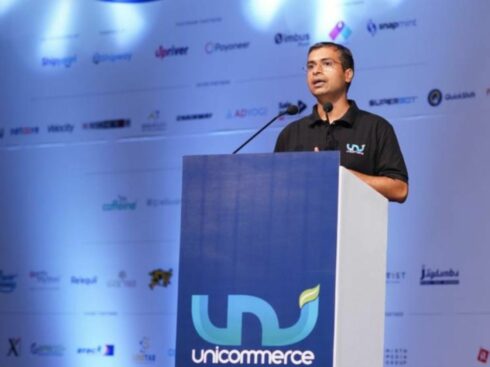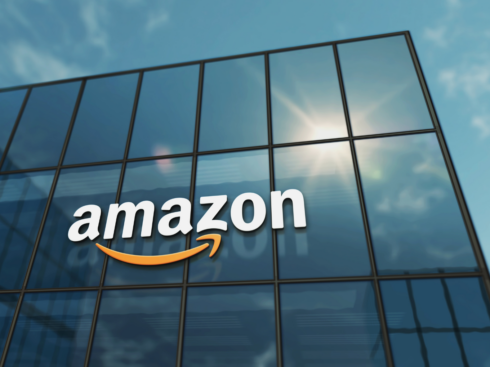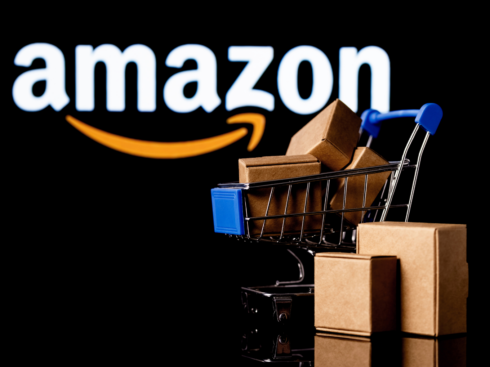
Do you get excited when you find an unsolved problem and start thinking how can you build a product that can be used by millions?
It’s not enough to choose your product idea based on problems that you or people around you face. You need to think like a product, engineering, business and a marketing professional to build a successful product at the first go.
Here is a framework that attempts to capture how to think about developing a good product. Where should one zero in while conceptualising, building, iterating and launching the product and in what order? Can there be a way to evaluate chances of success ? How to ensure that it will be liked by millions of users ? What should be the priorities for a product that is inherently designed to grow and sustain itself?
Solve A Monetisable Problem
Your product should ideally solve a monetisable pain point. Zomato helps you choose a restaurant based on locality, cuisine and menu. You should appeal to a vast and large audience either by creating a novel and engaging product or by exceptional marketing. Consider Pokemon GO. There is no burning problem that you solve by building a game but games manifest innovation, unleash creativity and are one of the most successful app categories when it comes to engagement and monetisation. As per stats, more than 20% apps on play store and app store are games.
More often than not, we don’t understand the difference between a problem and viable business idea. How can you be sure that you are really solving a problem that can help you build a sustainable business? I think there is no other way than talking to your potential users or customers.
If you are building a B2B product, you should try and sell it even before you start building it. Either you will get to know that it doesn’t sell or you will know what to build in order to sell the product to the customer. Try to get a pre-order if customer agrees to buy.
If you are building a B2C product, try to do as many user interviews as you can and understand the way currently users/people are solving that pain point. Then, evaluate if your product offers a superior solution or not.
Total Addressable Market Size Should Be Large Enough
A product can create a large enough market in many ways. It can serve a vast number of users (e.g. music streaming apps) or the frequency of transaction/interaction could be very high in a niche segment (e.g. dribble). By large enough market, I mean revenue potential and, hence, how likely is it to build a sustainable business.
Let’s take an example. If you wish to build a feedback & ratings app only for educational institutions(K-12), you shouldn’t only look at the total number of parents living in a city/state/country or the number of schools in that particular city/state/country. Find out who are your customers/users – schools or parents? What are existing ways to find out reviews about schools? How many parents have their children who study or studied in K-12 institutions recently? How many of them can go to Internet to review an institution? How many of them will actually review a school? How will you be able to monetise these users? Will this further reduce this number?
Try to match this number by looking at existing competitors’ traction. How much money can you make using your revenue model considering this target user segment. The money you can make by monetising TA is a fair indicator of your actual market size.
Pricing Model And Affordability
Pricing is the most tricky part. Your product should be affordable to a large part of the target audience and you should be able to make profit. If affordability matters, few may argue- shouldn’t we then offer every product for free?
Well, then you may not be able to survive. You need to find out the right price point at which you can sell your product or service to a large enough audience to survive. Well-researched pricing structure defines your brand positioning, funding requirements, and your sustainability.
Youtube Red that competes with Hulu and Netflix, offers monthly subscriptions at the cost of 10 USD. Even after a year of launch, it has only 1.5 M users among 11 countries. The US alone has ~160 Mn youtube users, but the conversion rate is way below than 1%.
Before we deduce that users didn’t find ‘ads-free content, offline viewing, off-screen listening, google play music subscription and exclusive content’ exciting at $10 per month, we should consider how much money does Youtube make from a user, who watches 1,000 videos every month, from ads – may be not more than $2-$5. Why is Youtube Red priced at $10 per month then? Comparing the subscription fee of Hulu and Netflix with Youtube Red’s explains the rationale.
Consider a few more examples- Lumosity has a freemium model. A limited version is accessible to everyone. For more games, you need to upgrade. Wikipedia and Quora are completely free. Quora has recently started showing adverts. Twitter is free but makes money through ads. Prisma never made money, they are still trying to figure out how to sustain.
I find the pricing model of Audible( by Amazon) pretty impressive. Your first book on Audible is Free. Later, you can pay a monthly subscription fee and get one credit every month. You can use this one credit to buy a book every month. If you don’t like the book, you can return it and get another one. You can keep as many audiobooks with you as many credits you have. I am an avid listener of audiobooks. In the long run, I found out that buying an audio book is cheaper than buying a hard copy of books.
Technology products (B2B or B2C) make money in 4 ways –
- Through transactions e.g. mobile wallets
- Through subscriptions e.g. Amazon Prime, Basecamp
- Advertisements/sponsorships e.g. YouTube, Zomato.
- Backed by another product that utilises users’ data or data generated by users. e.g. LinkedIn sells ads, job seeker products and talent solutions by using user-generated data. Practo’s appointment booking app is supported by their practise management s/w.
Your product should make money right from day 0 or should have a way to turn on revenue channels at a later point in time. It’s absolutely necessary to brainstorm your approach of earning money at the idea stage.
Gone are the days when VCs used to back business models that aimed to make money after five years. The key to a sustainable robust business is to grow the company using customer revenues. Your revenue model will evolve over the course of time but you should have a plan to make money from day 0.
Be Effective
Your product should solve at least one pain point very effectively. If you are planning to launch a product in a crowded space, focus on differentiation and be superior to everyone else with that one USP. e.g. Gmail offered 1 GB of space, cleaner UI, better spam detection and killed Yahoo!Mail.
Your differentiation can be either or all of these-
- Better design.
- Much desired feature that is not available in competitor’s product.
- Excellent customer service (quality= your offering – customer’s expectation).
- Different positioning in terms of price or audience.
- Brand messaging.
Be remarkable and solve few pain points extremely well. Zivame (an Indian online lingerie brand) is an outstanding example of differentiation. They ensure customers choose the right size.
I consider UX part of being effective. You should not make users think about how to use the product and it should be super easy for users to perform their desired/core actions. Consider these examples-
- If you open Periscope using your Twitter a/c, you are presented with a world map with several live broadcasters. It’s pretty intuitive to go live. Periscope serves the need to see the world in real time.
- Sign up for Pinterest. The first thing it does is to ask you for your top five interests. Next, you are presented with loads of infographics and photographs that can brim you with ideas. It does exactly what it claims.
- Let’s consider a different example. Search in Twitter assists users with trends, recent searches and also provides users an option to filter results based on photographs, videos etc. They are darn good in assisted search.
It’s not only core interaction that needs to be very simple to use but other features too should be easier to use.
Another way to be effective is by creating amazing product experiences focussed on the stickiness of the product. The Cost of switching to another competitor product should be very high for users. You can only achieve this by offering incremental value to users. The more they use the product, the better it should get for them. People have a very short span of attention. Novelty matters. In order to consistently provide fresh experiences, you need to utilise the data generated by users to render personalised experiences.
Repetitive interactions of users around core features and users’ trail should give clues on how to incrementally create delightful and intelligent product experience every time the user logs into the product. Most importantly, you should figure out how to entice the user to come back to the app/product frequently. This can happen if the product succeeds in locking some reward for the user. Rewards can be anything from endorsements to discounts.
When you publish a post on Pulse (LinkedIn) comments, likes and content are locked in LinkedIn. Endorsements, recommendations and wealth of your connections are valuable assets for you and you can’t export/detach these from linkedIn. These assets are only usable inside LinkedIn’s platform.
Visual design is another aspect you should worry about in your plan to be effective. Yet, solving pain points and many other things listed here are far more important than a splendid visual design. Just by using material design and by following conventions you can go very far.
Simplifying UI and improving the UX should be your priority but not extraordinary visual design. You may omit to focus a lot on aesthetics in the beginning. But aesthetics do matter. Just like marketing matters, copy on your website matters, splendid visuals do matter but as an entrepreneur/product manager, you can first channelise your energy on the rest of the items listed here.
Delivering superior quality of service and running the business well by focussing on right metrics can easily trump the benefits of a beautiful app design. A perfect example of this theory is Amazon’s ecommerce website. Another example is basecamp by 37signals. They are only 50 employees strong and are running a profitable business from the last 14 years. Visual design is not exemplary but their website is fast, reliable, and easy to use.
An app named Clue that helps women track periods is an awesome app, it does all that it claims and the visual designs look stunning. If you can accomplish something like Clue along with other factors, users will love you.
Choose Your Metrics Wisely
They are the compass of your product. They can help you channelise your efforts and resources on areas that can create maximum impact on success of your product and business. Nearly everyone who has a mobile app, measures and chases DAUs, MAUs, stickiness (DAU/MAU), retention (D30, D60), average session time etc.
In my observation, more often than not, these numbers prove to be vanity metrics. Top two or three metrics to chase should be thoroughly brainstormed inside the company. You should also tweak or change the metrics as your business evolves. Notably, your metrics should be tightly coupled with your business objectives.
For example, as a recharge app your metrics should include the number of transactions made per month and number of transaction processed per month per user. It doesn’t matter what’s your DAU, you only make money when user completes a transaction. If you are clear about your business objectives, eventually you will land up making right decisions. You might even argue what’s the point of building an app and spending money in growing installs if I can achieve similar results using a progressive webApp. That’s exactly the kind of insights you can derive if you focus on right metrics.
Pinterest, world’s catalogue of ideas, tracks several engagement metrics since their current/future revenue model revolves around native ads. They measure a unique metric and call it – Xd28s. Xd28s are the number of Pinners who have used Pinterest for X days in the past 28 days.
Soundcloud tracks the number of listeners and number of hours of audio uploaded per minute. These metrics are directly related to their revenue model. They make money by offering paid tiered model to artists/brands with specified audio upload time limits. Soundcloud has a concept of ‘ad-supported listening experience.’ They let artists/brands/distributors register as a premier partner and make money by ads.
Product As Marketing
Before you build your product, think how can you leverage your product to grow it organically. Such a tuning of your product features can give you massive leverage in the initial phase. Using engineering as marketing, empowering your customers utilise the product for an additional benefit, and exploiting other platforms by intelligent integrations are few common strategies.
It’s well-known that word of mouth is the best marketing technique but you need to build the appropriate structure to facilitate such network effect. A marketing campaign that becomes viral over social media is different than a feature or hack that helps grow the user base organically.
P.S. I love you. Get your Free Email at Hotmail – is possibly one of the earliest and best growth hacks that was ever executed. It was so integral to the product that it helped Hotmail achieve quick insane growth without spending any marketing dollar.
Bland referral campaigns and discount coupons also work but they should be your last resort.
Explore integrations with external tools/products, build partnerships and think hard to build a feature that can empower users with some bragging rights. One of the hacks will work for your product and the target segment, hence, consistent experiments are the key.
Few popular ideas used by famous B2C products are –
- Let users share a valuable content/badge within their network e.g. Crowdfire is a social media engagement platform. One of the features of their product is to let users automate 1st response to new followers on twitter. They give this feature free to all users. All such introductory messages are appended with via @crowdfire. Simple but very effective hack.
- Integrate with a very popular product. e.g. Spotify piggybacked on facebook by integrating with itself with news feed.
- Build a feature that either solves a popular topical problem or is an extraordinarily clever bait. (e.g. Walnut’s app used its massive user base to let users know which ATM had cash during demonetisation phase in India.)
- FreeCharge initially offered users coupons at the final payment step of recharge. This became a talking point and an additional advantage for users to use FreeCharge. Now, there is a startup codemojo that offers a similar solution as plug & play service.
Scalability
Building for scale is in the DNA and an integral part of business strategy of few companies.
I am not talking about scaling technology infrastructure, I am talking about the slope at which your revenue can grow without incurring extra costs at the same rate.
Let’s take an example. Assume you are trying to build a personal assistant, but instead of using AI, you thought it’s good to begin with, supporting a few use cases and to get it done you hired a team of operators. You can train operators for use cases such as movie ticket booking, train & flight ticket booking, ecommerce or booking a cab but one operator can only handle N number of requests per day. Your product may see a lot of demand and you might think this looks like a great idea to pursue.
But, you can’t grow your revenue without incurring more cost i.e. without hiring more operators. If magically, you are able to show some healthy profit margin with this model, it will be extremely tough to move the margin higher as you serve more and more customers unless you are able to automate a large number of requests.
This problem is difficult to crack because of complexities around language, semantics and prevalent human – machine interaction in providing assistance. Had it been easy, you might have built it in the 1st place.
I believe that it’s not easy to figure out which model can’t scale. In Shorts from India is another good example. They are news aggregators and give you 60 words summary of news articles every day. These articles are written by editors. At prima facie, it may seem that to produce more articles per day they will need more editors to write those stories. It’s absolutely right to assume. Let’s work on the numbers. Say one editor can summarise 10 articles per day and you have hired 25 editors. Giving some space for operational inefficiencies, you can produce 200 articles per day. Now with varied type of articles, you can serve lakhs (N X 100K) of DAUs, considering your choice of language has such large market size.
Currently, they don’t make revenues but native ads could be a way for them. If they are able to figure out enough revenue streams to cover the cost and generate a good profit margin. You can say they have a good business but are they scalable? There could be one solution which can further increase the readership without incurring more cost if In Shorts can programmatically create article summary. But it’s a very complex problem to solve if you add news articles from different languages, this problem becomes even more difficult to solve.
In Conclusion
In a nutshell, try to figure out what’s the profit margin you can settle for and would that be sufficient for you to have a sustainable business for a long time. There could still be several ways to manage the show and make money at the end of the road. A quick study of Silicon Valley startups can show you the way, but now a relatively mature ecosystem has taught a lot to investors so your selling skill may be the most coveted weapon in such cases.
I asked a question to a set of VCs and angel investors in an event on how do they figure out if a model is scalable or not. I wasn’t surprised when I got no clear answer from them. One partner from a well-known VC firm said – “You can only figure it out in hindsight.” The reason why I think scalability is extremely important is because it can really separate you from a startup and help you become a self-sustainable business. Right from the beginning, you focus on increasing revenue and decreasing your operational cost, you possibly have the formula to success.
There is a difference between knowing the path and walking the path. – Morpheus from The Matrix.


























